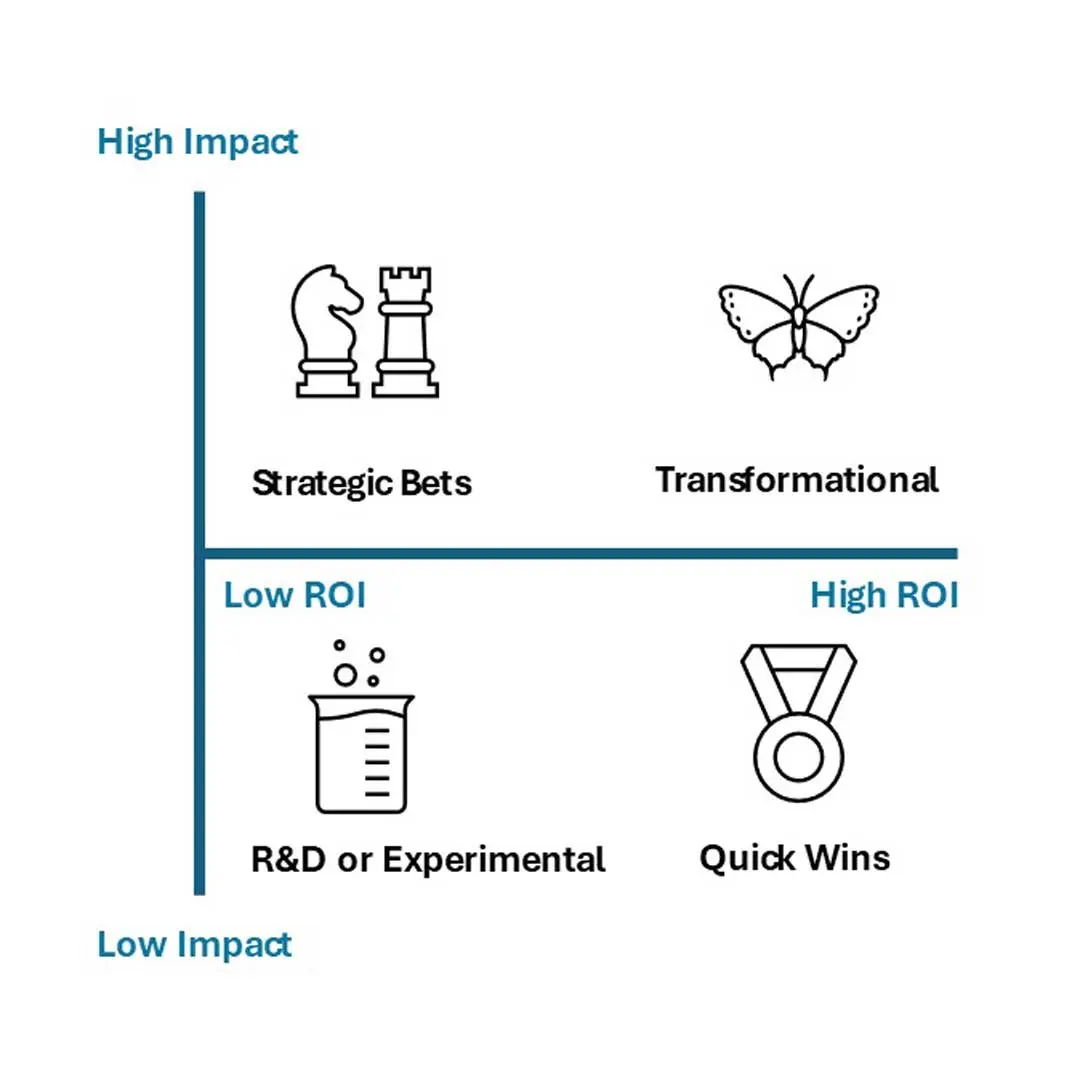One of the most persistent challenges facing AI leaders is determining which use cases to prioritize, balancing innovation potential with measurable business value.
One way to do this is to use a Strategic AI Use Case Scoring Matrix. This framework provides CAIOs and senior executives with a structured, transparent, and repeatable approach to assessing, selecting, and sequencing AI initiatives based on both Return on Investment (ROI) and Impact.
Purpose of the Framework
Al projects are not created equal. They differ in technical complexity, maturity, cost, feasibility, and-perhaps most importantly-impact. Some provide immediate operational gains; others aim for long-term organisational or environmental value. Some align closely with the company's strategic plans; others may still be in the exploratory phase.
Given this complexity, the scoring matrix serves several critical purposes:
- Curation - Discover and highlight the most compelling Al use cases that reflect innovation and strategic relevance.
- Insight - Spot cross-market patterns, identify implementation gaps, and understand success factors.
- Strategic Value - Guide decision makers in future prioritization and investment.
- Comparability - Enable side-by-side evaluation using a consistent methodology
By standardizing how AI opportunities are evaluated, organizations can move from ad hoc experimentation to strategic orchestration, maximizing the enterprise-wide benefits of AI.
The Strategic AI Use Case Scoring Matrix
At the core of the framework is a two-dimensional model that plots AI use cases along Impact (vertical axis) and Return on Investment (ROI) (horizontal axis).
Below is the matrix visualization:

This simple map helps leaders classify AI initiatives into four primary categories:
- Transformational (High ROI / High Impact): Large-scale initiatives that redefine business models or create new markets.
- Strategic Bets (High Impact / Low ROI): Long-term or foundational efforts that position the organization for future advantage.
- Quick Wins (High ROI / Low Impact): Tactical projects that deliver measurable gains rapidly, ideal for early momentum and proof of value.
- R&D or Experimental (Low ROI / Low Impact): Exploratory use cases aimed at learning or innovation without immediate business returns.
Scoring Dimensions
Each axis contains 5 sub-criteria scored from 0 to 10.
Return on Investment
- Cost Saving Potential - Reductions in staff time, operations, or administrative load
- Revenue Generation/Avoidance - Creation of new revenue or avoidance of future cost
- Scalability - Applicability across departments or wider implementation
- Implementation Feasibility - Technical readiness and organizational preparedness
- Time to Value - Speed to achieve results and benefits
Impact
- Strategic Alignment - Relevance to organisational and stakeholder goals
- Social Value - Employee / Customer inclusion, welfare improvements, stakeholder equity
- Economic Impact - Job creation, productivity, contribution
- Environmental Contribution - Resource optimization, emissions reduction
- Innovation Value - Novelty, replicability, and positioning
By combining quantitative metrics with qualitative assessment, the matrix provides a comprehensive, balanced view of each initiative’s potential.
Using the Matrix
CAIOs can apply the matrix throughout the AI lifecycle:
- Discovery: Identify and compare new opportunities across business domains.
- Evaluation: Prioritize investments based on both immediate returns and long-term strategic potential.
- Governance: Communicate decisions transparently to executive and stakeholders.
- Iteration: Reassess project positioning as technologies mature or business contexts shift.
This process transforms AI planning from intuition-driven to evidence-based decision-making, enabling scalable and sustainable innovation.
Benefits for Chief AI Officers
The framework provides several tangible benefits:
- Transparency: Creates a shared decision-making language between technical and business teams.
- Strategic Focus: Concentrates resources on initiatives that matter most.
- Adaptability: Evolves with business priorities and technological advances.
- Measurable Outcomes: Aligns success metrics with enterprise KPIs.
The Strategic AI Use Case Scoring Matrix empowers Chief AI Officers to lead with clarity and confidence. By integrating ROI and Impact into a single evaluative lens, it transforms AI portfolio management from a tactical exercise into a strategic discipline, ensuring that every AI investment drives both business value and long-term organizational transformation.